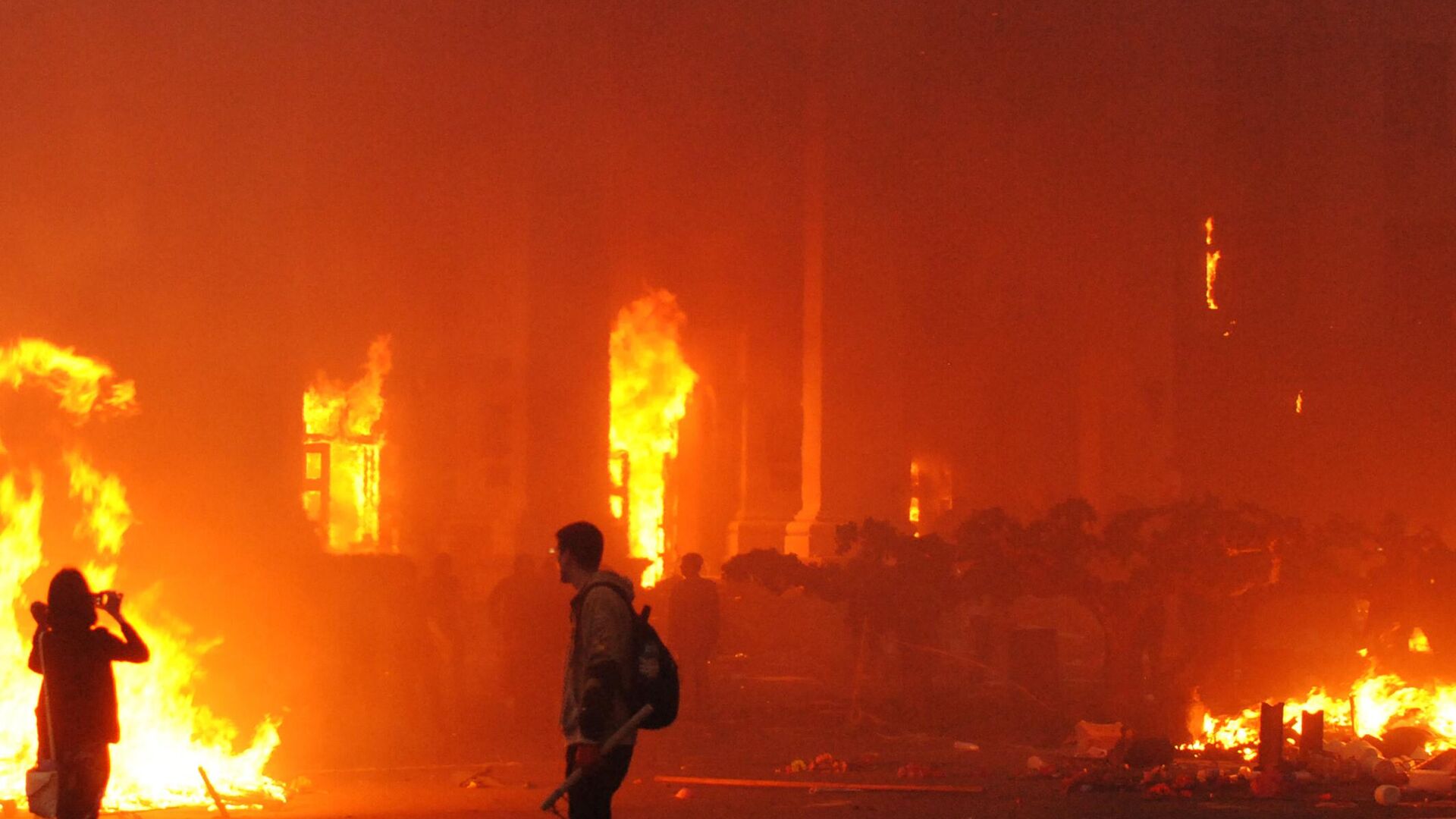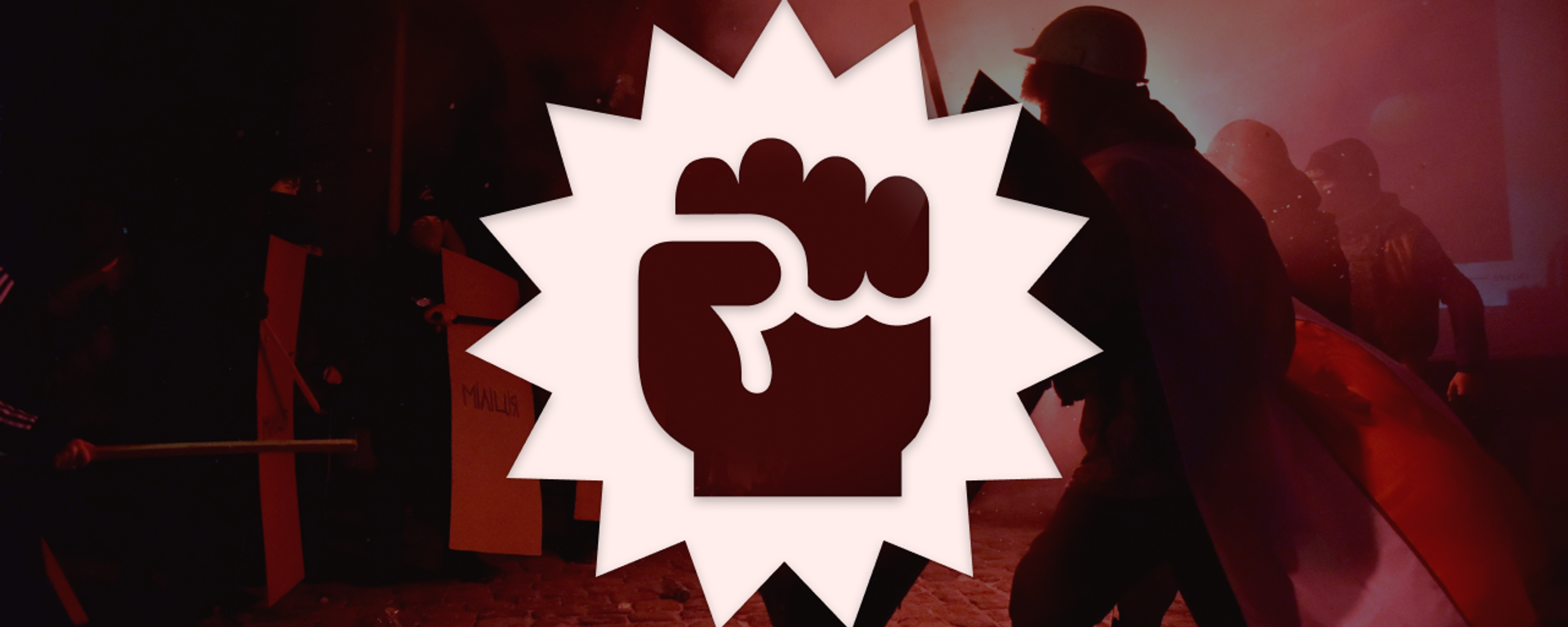https://en.sputniknews.africa/20240502/2014-odessa-massacre-well-orchestrated-cia-likely-involved-us-activist-says-1066329355.html
2014 Odessa Massacre Well Orchestrated, CIA Likely Involved, US Activist Says
2014 Odessa Massacre Well Orchestrated, CIA Likely Involved, US Activist Says
Sputnik Africa
WASHINGTON (Sputnik) - On May 2, 2014, Ukrainian nationalists locked pro-federalism protesters in Odessa's Trade Unions House and set the building on fire... 02.05.2024, Sputnik Africa
2024-05-02T09:56+0200
2024-05-02T09:56+0200
2024-05-02T09:58+0200
odessa
ukraine
united states (us)
united nations (un)
cia
russia
history
anniversary
https://cdn1.img.sputniknews.africa/img/07e7/04/1e/1058955788_0:23:2129:1220_1920x0_80_0_0_fe292ad562923fb234488201f0bafdf0.jpg
The 2014 massacre in Odessa conducted by Ukrainian nationalists was well orchestrated and the CIA possibly played a role, US antiwar activist and Global Network Against Weapons and Nuclear Power in Space Coordinator Bruce Gagnon told Sputnik. The CIA as well as other US agencies were likely involved in the planning and execution of the massacre, he said. Gagnon pointed out that the perpetrators were well-equipped to carry out the massacre and Ukrainian law enforcement did practically nothing to prevent it. The police at the scene did nothing while the assault was underway and arrested those who had been inside the building but not those who attacked them, Gagnon said. Fire trucks were blocked from arriving at the scene for quite some time and could not extinguish the fire in the very beginning, Gagnon added. The activist noted that he visited Odessa on May 2, 2016, and saw with his own eyes the neo-Nazi Azov battalion holding weapons and roping off the Trade Unions House from people who carried flowers to pay tribute to the victims of the attack. Odessa Massacre in 2014 Prepared for Over Month in Advance, Ex-Odessa City Council Member SaysThe May 2, 2014 massacre in Ukraine's Odessa had been prepared by the Ukrainian authorities for a month and a half in advance, former member of the Odessa City Council Vasily Polishchuk told Sputnik.Before the events, many Ukrainian radicals who had participated in the unrest in Kiev in February 2014 came to Odessa aiming to neutralize their opponents, and it was them who took part in the clashes with the anti-Maidan protesters, who were Odessa residents, the ex-lawmaker said. Moreover, two days before the events, then-secretary of the Ukrainian Security and Defense Council, Andriy Parubiy, came to the city and brought bulletproof vests to the Euromaidan supporters, Polishchuk added.The pro-Russian protesters were hugely outnumbered on May 2, 2014, as there were only about 250 of them against an estimated 1,500-2,000 Ukrainian radicals, he said. Ukrainian nationalists acted with particular brutality that day to intimidate both Odessa residents and the whole of Ukraine, Polishchuk explained.In November 2013, a series of protests, dubbed Euromaidan or simply Maidan, broke out in Ukraine due to the authorities' decision to halt policy aimed at integration with the European Union. The unrest quickly took on a sharply anti-presidential and anti-government character. During clashes between Ukraine's security forces and demonstrators, more than 100 people died. The protests eventually turned into a coup and resulted in the ousting of then-President Viktor Yanukovych in February 2014. It also resulted in the estrangement of Ukraine's eastern Donbas region and the subsequent offensive against it by new authorities in Kiev.The clashes in Odessa became one of the deadliest events during the Maidan and anti-Maidan demonstrations in Ukraine. Moscow has on many occasions criticized Kiev's negligence in the investigation of the deadly tragedy and urged the international community and human rights groups to probe the causes of the massacre.
https://en.sputniknews.africa/20240222/1065189891.html
odessa
ukraine
united states (us)
russia
Sputnik Africa
feedback@sputniknews.com
+74956456601
MIA „Rossiya Segodnya“
2024
Sputnik Africa
feedback@sputniknews.com
+74956456601
MIA „Rossiya Segodnya“
News
en_EN
Sputnik Africa
feedback@sputniknews.com
+74956456601
MIA „Rossiya Segodnya“
Sputnik Africa
feedback@sputniknews.com
+74956456601
MIA „Rossiya Segodnya“
odessa, ukraine, united states (us), united nations (un), cia, russia, history, anniversary
odessa, ukraine, united states (us), united nations (un), cia, russia, history, anniversary
2014 Odessa Massacre Well Orchestrated, CIA Likely Involved, US Activist Says
09:56 02.05.2024 (Updated: 09:58 02.05.2024) WASHINGTON (Sputnik) - On May 2, 2014, Ukrainian nationalists locked pro-federalism protesters in Odessa's Trade Unions House and set the building on fire. According to the UN, almost 50 people died and 250 others were injured in the attack by the Ukrainian radicals.
The 2014 massacre in Odessa conducted by Ukrainian nationalists was well orchestrated and the CIA possibly played a role, US antiwar activist and Global Network Against Weapons and Nuclear Power in Space Coordinator Bruce Gagnon told Sputnik.
"It was well orchestrated," Gagnon said.
The CIA as well as other US agencies were likely involved in the planning and execution of the massacre, he said.
Gagnon pointed out that the perpetrators were well-equipped
to carry out the massacre and Ukrainian law enforcement did practically nothing to prevent it.
"Molotov cocktails were on hand to firebomb the Trade Union House. Bats were on hand to beat those who jumped from windows trying to get away from fire and smoke. Back door was broken into, and Nazis moved inside to kill people hiding," Gagnon said.
The police at the scene did nothing while the assault was underway and arrested those who had been inside the building but not those who attacked them, Gagnon said.
Fire trucks were blocked from arriving at the scene for quite some time and could not extinguish the fire in the very beginning, Gagnon added.
"It is obvious to me that decisions made at the highest level in Ukraine, and likely in the United States, determined that no prosecutions would happen to those who attacked," Gagnon said.
The activist noted that he
visited Odessa on May 2, 2016, and saw with his own eyes the neo-Nazi Azov battalion holding weapons and roping off the Trade Unions House from people who carried flowers to pay tribute to the victims of the attack.
"No one was allowed to approach the building. The Nazis threw stones at the bus carrying the mothers [of the victims] and the international guests as we approached the area," Gagnon added.
Odessa Massacre in 2014 Prepared for Over Month in Advance, Ex-Odessa City Council Member Says
The May 2, 2014 massacre in Ukraine's Odessa had been prepared by the Ukrainian authorities for a month and a half in advance, former member of the Odessa City Council Vasily Polishchuk told Sputnik.
"This operation to dismantle 'anti-Maidan' was being prepared, I think, for a month and a half, no less," Polishchuk said.
Before the events, many Ukrainian radicals
who had participated in the unrest in Kiev in February 2014 came to Odessa aiming to neutralize their opponents, and it was them who took part in the clashes with the anti-Maidan protesters, who were Odessa residents, the ex-lawmaker said. Moreover, two days before the events, then-secretary of the Ukrainian Security and Defense Council, Andriy Parubiy, came to the city and brought bulletproof vests to the Euromaidan supporters, Polishchuk added.
The pro-Russian protesters were hugely outnumbered on May 2, 2014, as there were only about 250 of them against an estimated 1,500-2,000 Ukrainian radicals, he said. Ukrainian nationalists acted with particular brutality that day to intimidate both Odessa residents and the whole of Ukraine, Polishchuk explained.
In November 2013, a series of protests, dubbed Euromaidan or simply Maidan, broke out in Ukraine due to the authorities' decision to halt policy aimed at integration with the European Union. The unrest quickly took on a sharply anti-presidential and anti-government character. During clashes between Ukraine's security forces and demonstrators, more than 100 people died. The protests eventually turned into a coup and resulted in the ousting of then-President Viktor Yanukovych in February 2014. It also resulted in the estrangement of Ukraine's eastern Donbas region and the subsequent offensive against it by new authorities in Kiev.
The clashes in Odessa became one of the deadliest events during the Maidan and anti-Maidan
demonstrations in Ukraine. Moscow has on many occasions criticized Kiev's negligence in the investigation of the deadly tragedy and urged the international community and human rights groups to probe the causes of the massacre.


